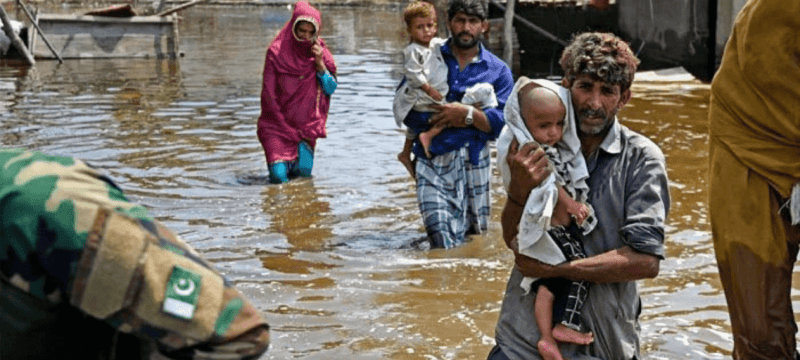The recent Sutlej River flood has brought widespread destruction, leaving 157 villages submerged and over 166,000 people homeless, according to official district administration data released recently.
Read More: Punjab on Flood Alert as India Releases Water into River Sutlej
The flood, currently at a low level in the Bhukan Patan area, has had a profound impact on the region, with the Head Sulaimanki area reporting an inflow of 40,389 cusecs, worsening the situation. So far, the flood has affected a staggering 310,383 individuals, with a tragically low death toll of just six.
Bahawalnagar district, where a 150-kilometer riverine stretch bore the brunt of the flood, witnessed its worst flooding in 35 years, as reported by local residents.
Official records indicate that over 160,000 acres of fertile land have been laid to waste, and 17,549 houses have been either partially or fully damaged.
Protective embankments have been breached, and crucial roads have been washed away by the deluge.
The data also confirms that dozens of villages remain submerged, with over 100 others isolated due to road and protective bank destruction.
The disaster has severely impacted education, with at least 43 schools in the riverine area damaged, affecting around 9,000 children.
Despite limited resources, rescue teams successfully relocated 18,000 people and 3,000 animals to safer areas, as reported by the rescuers. Local villagers express concern about the uncertain future that lies ahead.
Thousands of people are left helpless and forced to live in the open due to an acute shortage of food and fodder for animals.
A local official, speaking on the condition of anonymity, highlighted the urgent need for the resettlement of displaced persons, but stressed that this process will take time.
Numerous complaints have been raised regarding the relief camps set up by the district administration. Affected individuals assert that these camps exist only on paper, lacking basic necessities such as food, water, and animal fodder.
Farmers and cattle rearers constitute a significant portion of the affected population, and they fear the long-term consequences of the flood.
Agricultural activities have been halted for the season, exacerbating the challenges faced by individuals in the affected areas. Moreover, locals emphasize the social cost of floods in the near future.
Without proper support, these areas may experience an increase in crime rates, and there is a possibility of diseases breaking out if immediate remedial measures are not taken.
The people in the region eagerly await assistance and relief, hoping for a savior to help them rebuild their lives.









